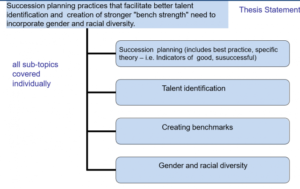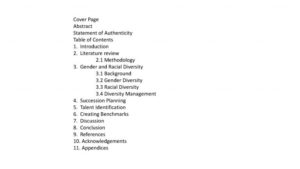Key success factor of good writing: Organisation

The key success factor of a good text is good language. Right?
Not necessarily so. Many texts I see, be they research papers, journal articles or theses, contain some pretty impressive vocabulary and have complex sentences which are mostly grammatically correct. However, often they do not make sense. It’s a challenge to understand the messages and, as a reader, I am soon lost in a convoluted labyrinth of words. While all the correct words are in place , there is a lack of structure, organization and navigation. Too often we as writers are so focused on making sure we cover the numerous chunks of information we’ve found that we fail to orientate out readers, take them by the hand, and carefully guide them through our argumentation.
You need outlines. I swear by outlines. At the start of your project you will be buzzing with ideas and usually indulge in some brainstorming followed by some relatively random desk research. You begin to develop an insight into your topic, have an inkling of which dimensions, aspects or sub-topics are relevant. That’s when you write your outline.
If it’s a paper or a thesis many authors will have drafted a main research question or hypothesis. From this key sentence they derive sub-questions.
Imagine the main thesis is: Succession planning practices that facilitate better talent identification and creation of stronger “bench strength” need to incorporate gender and racial diversity.
Preliminary desk research establishes the following elements:

Next, the researcher decides on the logical sequence of these topics and decides, perhaps, that Gender and Racial Diversity should be the final sub-topic. Under this chapter heading further sub-topics emerge: Gender Diversity, Racial Diversity and Diversity Management. The working outline is continuously expanded and, at this stage, includes all the other elements of a text. The outline now looks like this:

That was the easy bit.
At this stage, you might think you’re done with organisation. But no. As you gather a mountain of data, a further level of organization emerges: your paragraph topics.

Paragraph organisation is vitally important. Often, as readers, we don’t necessarily start reading a paper or an article intensively from the start. We skim until our eye lands on a word or a phrase we’re interested in. To help the reader, ensure you have a clear topic sentence at the start of your paragraph. This topic sentence clearly announces what information will be found in that paragraph and cognitively prepares the reader for what follows.
An article may not have as many levels, but should also be organised in similar fashion. Actually, any text benefits from drafting an outline. A first draft of your text should be about where each aspect of your topic is presented. It should never be about writing impressive sentences or micro-managing the language. Time enough for that during the second draft.
Organisation is not only important in navigating your reader, but as you will have noticed from the above, it is part of a standardisation and framing. Global writers know that for certain types of publication, certain elements must be included in a specific order. The examples here are typical for publishing in English – the German tradition is different.
You may find some of the following resources useful in developing outlines
Comments
No comment posted about Key success factor of good writing: Organisation